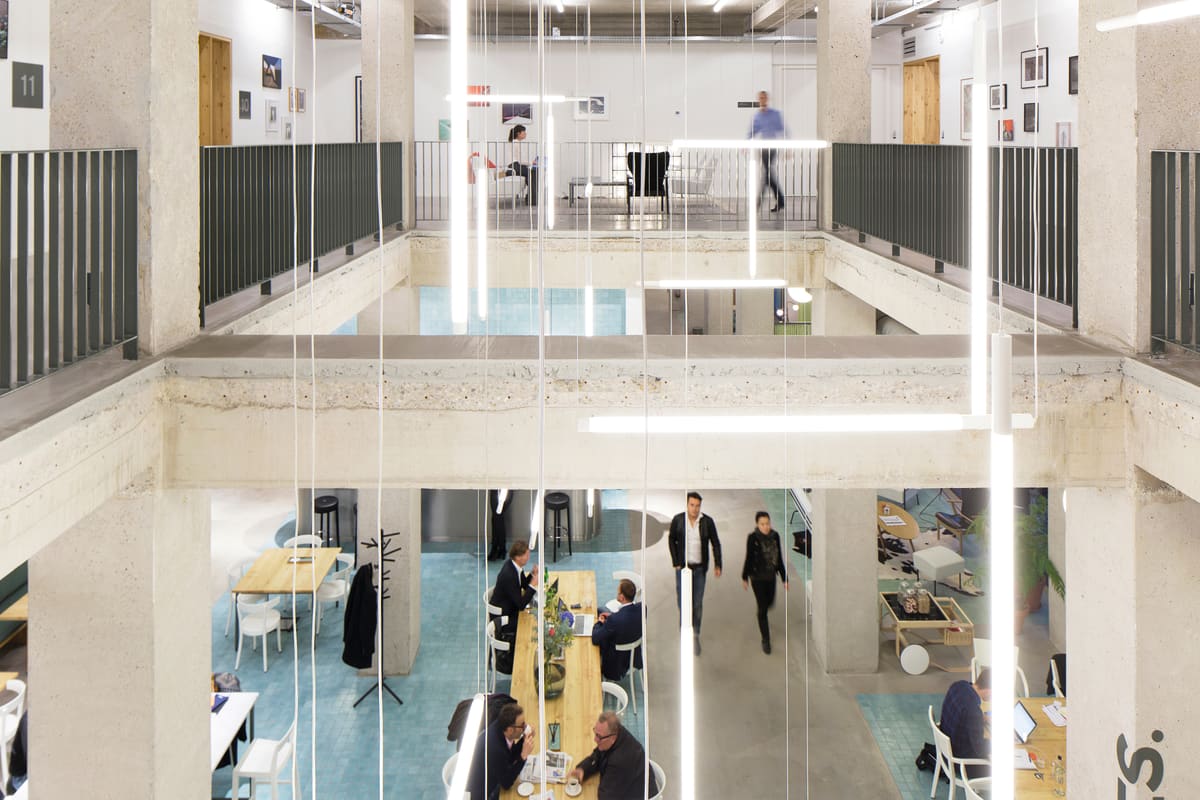Professor Nicholas Bloom, a leading independent expert on hybrid working, has shared five practical insights that can help your business thrive in today's evolving workplace environment. Here are five crucial steps to excel at hybrid working in your organisation.
At the beginning of June, two years on from the pandemic, Deloitte’s Chief Economist, Ian Stewart, posted an assessment of hybrid working. In it, he said that while many pandemic-induced changes have been transient, hybrid working is becoming increasingly permanent.
The model represents a major shift in work organisation, particularly for higher-skilled, higher-paid jobs in technology, finance and business services. It’s not hard to see why it’s become a permanent fixture; hybrid workers are healthier, happier and less likely to quit, as IWG research confirms.
It brings productivity gains, too. Research by Professor Nicholas Bloom of Stanford University found that due to improved focus, reduced commuting time and increased working hours, hybrid results in a productivity boost of around 3%. IWG's research backs this up, with nearly a third (31%) of surveyed workers feeling their productivity was enhanced by adopting more flexible working practices. Moreover, nearly two-thirds stated that the freedom to choose where they work improved their performance. Professor Bloom has some useful advice for business leaders looking to maximise these productivity gains, highlighting what businesses can do to get the most from hybrid.
Five steps to hybrid success
Professor Bloom’s advice takes the form of five key steps.
1. Encourage in-person events
His first piece of advice for business leaders is to encourage a culture in which events, training, and social events happen in person rather than online. This recommendation aligns with the sentiments expressed by IWG's CEO, Mark Dixon: “It’s clear that working solely at home or solely at a main office is not what people want or need. They love the sense of companionship that comes with face-to-face interaction, but they don’t necessarily want that every day of the working week. Their personal lives are becoming more important to them.” This underlines the appeal of local flexspaces - they keep commuting time to a minimum while still allowing workers the option to meet up and work face-to-face, thus promoting spontaneity and companionship in the workplace without the obligation of daily attendance.
2. Create ‘anchor’ days
Professor Bloom also advocates for business leaders to establish ‘anchor days’ as part of their company culture. These mandatory office days introduce a structure to the hybrid working model, which multiple studies show is valued strongly by hybrid workers.
This recommendation is echoed by IWG’s Chief Talent Officer Francesca Peters in the Hybrid Talent Magnet white paper. She emphasises the importance of physical office interactions for employee wellbeing, stating, “The office side of the hybrid equation is as important for wellbeing as spending time at home. That’s because it offers the opportunity to see and interact with colleagues and like-minded individuals in real life rather than on a screen, whether that’s at a central headquarters or a local flex space.”
3. Invest in the right office space
The functionality of office spaces has evolved – the emphasis has shifted from individual cubicles to spaces that promote collaboration. To make the most of office days, business leaders should seek out spaces that foster group work and meetings, yet also offer areas for focused, individual work.
This balance is crucial for productivity and employee satisfaction. As Professor Bloom aptly states, “Coming into the office only to find oneself exposed to neighbours’ conference calls is not a happy experience”. A well-designed office space, like those provided by IWG, can accommodate varying work needs, facilitating effective collaboration without compromising individual focus.
4. Prioritise results over hours worked
Professor Bloom also suggests business leaders should encourage a culture that values work and results – ‘output-based evaluations’ – over the number of hours employees spend at their desks. And this 'outcomes over hours' approach is gaining momentum; earlier this year, the world's largest four-day week trial concluded in the UK, with results showing employees were more productive, despite working fewer hours.
5. An extra day for new joiners
Finally, Professor Bloom recommends making it mandatory for new joiners to spend an extra day in the office “for mentoring and to build networks”, helping them to absorb company culture more effectively.
There’s an incentive for business leaders to follow these steps and manage their hybrid model carefully. As Ian Stewart summarises, “The prize is enormous. We now know that, done well, hybrid working can make workers happier and businesses more productive.” Whatever the size of your business, it’s a no-brainer.
Discover how IWG can help your company master the art of hybrid, from consultative advice on your workplace strategy to direct access to 4,000 flexible workspaces worldwide.






